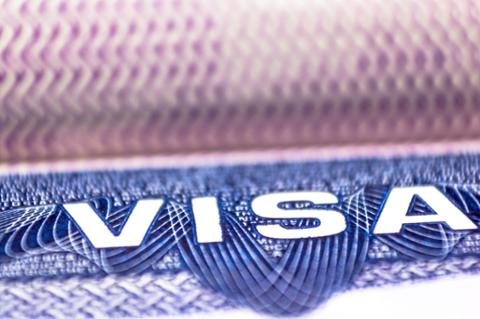
There are two modes of H-1B visa usage for companies that hire foreign-born tech talent: subcontracting and direct hiring. We’ve done the deep digging on the data, and we now have a clear idea how Apple, Facebook, and Google use H-1B in its entirety.
First, we’ll clarify the different ways the H-1B visa can be used by tech companies. The most straightforward way is direct: companies such as Google (we’re just using Google as an example, here, as they’re part of this story) apply for H-1B visas to the U.S. Citizenship and Immigration services (USCIS), which is a lottery system. This lottery system is capped; companies quickly filled the 65,000 cap earlier this year for fiscal year 2020.
To get around these caps, companies subcontract H-1B visa candidates. It’s playing both sides; Google can file for H-1B visas itself, but then use subcontracting firms that have also filed for visas to round out its workforce. If a company needs 3,000 placements, but was only awarded 1,500 visas directly from the USCIS, it might seek to fill the remaining 1,500 from subcontractors such as Tata Consultancy or Tech Mahindra, two contracting and outsourcing companies that received the most H-1B visas through the lottery system.
There are other reasons to source candidates from subcontractors. While it can cost more (a company has to pay salary plus whatever fees the outsourcing firm has) it does afford the company employing the visa recipient more flexibility. If a candidate doesn’t fit well with the company, or doesn’t have the necessary skillset, the company may be able to refer them back to their outsourcing firm rather than suffering through a year or more with a bad fit.
The data below comes from a massive (we're not joking; please don’t click the ‘dataset’ link unless you’re ready to download and process more data than your computer can likely handle) dataset from the U.S. Department of Labor on H-1B data for fiscal year 2019. We passed the data to our data science team because they’re smart people, and have massive computers we’re not allowed to touch. The results are pretty fascinating.
Of the three most notable Silicon Valley firms – Apple, Google, and Facebook – Apple is the most judicious when it comes to hiring H-1B candidates directly. As you can see in the chart above, Apple only hired 836 H-1B visa candidates directly, the lowest of any of the three firms (and nearly half what Facebook pulls in). Apple makes better use of outsourcing, though, and the reasons we listed above may be why. Apple sourced 2,274 H-1B visa candidates from outside firms, which was almost three times as much as Google, and over ten times as much as Facebook.
Facebook, the smallest of these big three tech firms, used H-1B the least. It directly sourced 1,521 foreign-born technologists, but only acquired 183 via outsourcing.
(We’ll also note these figured relate to the companies proper; often, these firms hire – directly or via outsourcing – for subsidiaries and branches. Facebook has several small arms, such as for research and development, it treats as unique entities. We chose to exclude this data for two reasons: it’s minuscule (a few hires here and there), and we don’t have a clear idea of what each company’s various sub-divisions may be named.)
Google, however... Google just loves the H-1B visa program. It sourced nearly three times as many foreign-born workers as second-place Apple, and was far and away the most prolific direct hirer of foreign-born talent on this list. In 2019, Google hired 7,604 H-1B candidates directly, and outsourced an additional 889. In total, Google has 8,493 H-1B visa holders working on its products stateside.
Although none of these three companies hired the most H-1B candidates (that honor went to Infosys), Apple acquired the most H-1B visa candidates via outsourcing. We’ve previously reported these companies most often use the visa program to hire “software engineers” and “software developers,” so these workers' specialized talents often aren't directly identifiable. This is likely why the U.S. government has started issuing more Requests for Evidence (RFEs) from employers, which mandates they prove their H-1B hires do, in fact, have a skillset that can’t be found domestically.


